|
|
|


The cave of Lascaux-the "Sistine Ceiling of the Cavemen"-a chance discovery by two boys in France in 1940, is the most spectacular sight we have ever had of the shadowy, powerful animal world of the Old Stone Age, some 17,000 years ago. It was soon overwhelmed by tourists, and in the early 1960's Lascaux showed inescapable evidence that its radiant frescoes of bison, aurochs, horses, and deer were dimming with molds and fungi generated by bright lights and the warmth and breath of countless visitors.
Lascaux was sealed in 1963 by order of the Ministry of Culture, its atmosphere monitored to restore the ancient conditions. But soon the ministry saw the need to create a record of Lascaux's now permanently inaccessible wonders; in 1981-83, hemmed in by infinite precautions, the distinguished pre-historian and television producer Mario Ruspoli filmed and photographed Lascaux with a six man team who called themselves "Lascaux-nauts." The process of recording the images is itself an exciting story as the photographers were limited to only two hours of work three times a week. The entire effort took three years.
While the glaciers made their last advance and retreat thousands of years ago, cavemen were painting in the underground galleries and tortuous chambers of Lascaux; it was a sanctuary filled with evidence of the human spirit that we are only now beginning to discern. The unprecedented skill and patience of Ruspoli's imaginative yet scrupulously scientific approach have opened up new, previously unexplored paths of research.
I have long been fascinated with this unique and compelling art, put forth so appealingly by our long dead ancestors. The pictures below are my versions, and tribute, to these great, first artists.

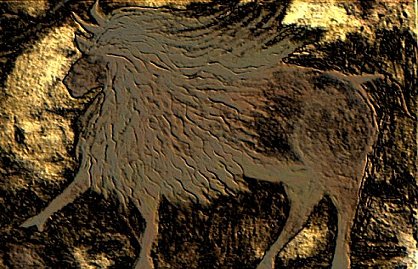 |
The Aurochs is the ancestor of most breeds of domestic oxen, notably of the fighting bulls of Spain. It was almost as important as the bison in the life, diet and religion of Upper Paleolithic hunters. Like the bison it appears in the very earliest representational art, painted, engraved and sculpted in sanctuaries, and is found throughout the Magdalenian period. |
|
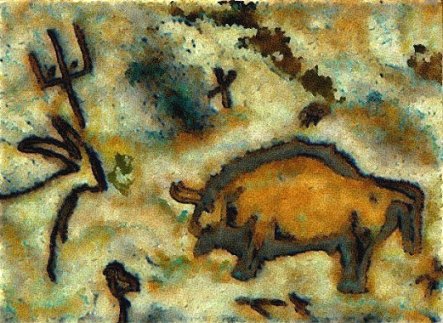 |
The European Bison is represented seventeen times at Lascaux. The most majestic animal of our land fauna and the one most threatened with extinction, it seems to be the symbol of our nature in its grandeur and integrity. The bison of pre-historic man, the one that is seen in engravings, paintings and sculptures is one of the peaks of animal art. |
|
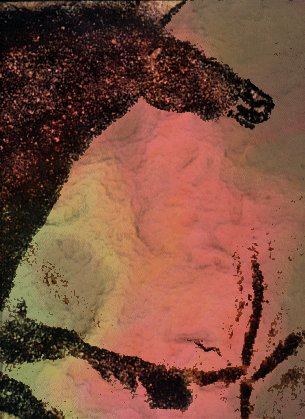 |
The horse is the most frequently depicted of all animals from the very beginning of art 30,000 years ago up to the end of the glaciation. No doubt there were numerous wild species and sub-species scattered over the pre-historic landscape to judge from bones and pre-historic drawings, but the most frequently represented species is the Przevalski horse (so named after the traveller who discovered it in 1881) which today is found only in a region of 7,720 square miles in Dzungaria, Mongolia. |
t |
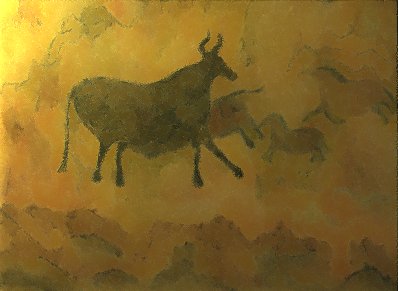 |
||
 |
||
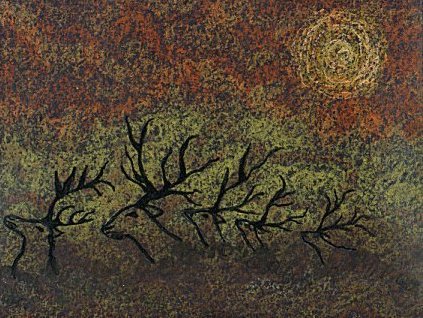 |
||

For more information on Lascaux,
visit this great website !
The Cave of Lascaux
Also, these great books are available on
Lascaux, Chauvet and Altamira caves,
and pre-historic art:
* The Cave Painter of Lascaux
Roberta Angeletti
* From Lascaux to Brooklyn
Paul Rand
* The Dawn of Art : The Chauvet Cave:
The Oldest Known
Paintings in the World
Jean-Marie Chauvet
* The Cave of Altamira
Antonio Beltran
* The Cambridge Illustrated History of
Prehistoric Art
Paul G. Bahn, Desmond Morris
* The Shamans of Prehistory: Trance and Magic
in the Painted Caves
Jean Clottes
* Journey Through The Ice Age
Paul G. Bahn, Jean Vertut
* All these fine books can be purchased at amazon.com


